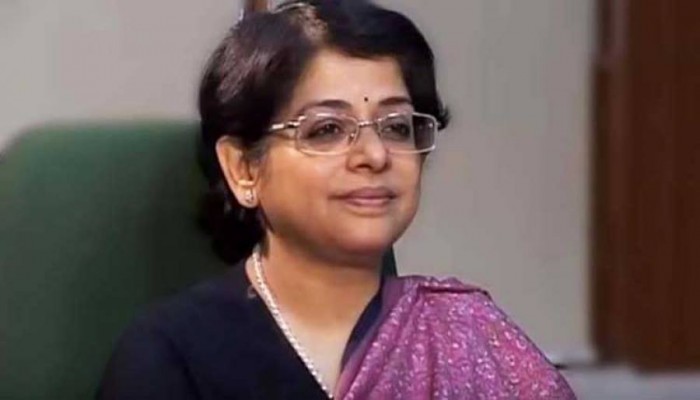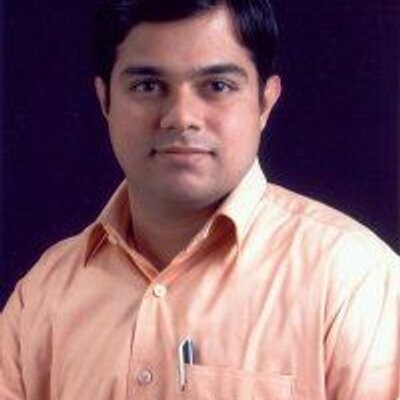Justice Indu Malhotra’s dissent resonates deeply with the silent majority
- In Current Affairs
- 08:56 PM, Sep 29, 2018
- M Pramod Kumar
The Supreme Court’s verdict on entry of women in Sabarimala temple reverberated across India as millions of Hindu devotees of Ayyappa reacted with disbelief and disappointment. Ironically, the sole voice of dissent in the Sabarimala verdict was that of Justice Indu Malhotra, the only woman in the 5-judge bench whose differing judgment struck a sympathetic chord with many Hindus like me who feel that her judgment reflects a more nuanced understanding of this ongoing conflict, arising out of a rigid constitutional interpretation of Hindu religious customs and practices.
It is perhaps keeping this day in mind that Swami Vivekananda made his prophetic admonition of social reformers more than a hundred years ago when he said that social reform in India should not disturb the faith of the masses. A reformatory movement which is born of widespread consensus at the grassroots and preceded by education of the masses alone can bring about a lasting change in society.
Justice Indu Malhotra echoes this sentiment in a significant observation she makes in her judgment:
“In the case of temple entry, social reform preceded the statutory reform, and not the other way about. The social reform was spearheaded by great religious as well as national leaders like Swami Vivekananda and Mahatma Gandhi. The reforms were based upon societal morality, much before Constitutional Morality came into place.”
It is thanks to the efforts of Advocates Parasaran, Sai Deepak and others who took great pains to make the judges aware of the rationale behind the timeless spiritual practices of Sabarimala that this note of dissent became possible. Two of the women petitioners also withdrew their plea on 1st August stating that they had now understood that the exclusion of women between the age of 10 and 50 was not intended to be discriminatory.
Otherwise, we would have perhaps had a unanimous judgment of a bench which appeared to be in a great hurry to prove at any cost that the Indian judiciary is a progressive, liberal and forward looking institution – even if upholding that image meant trampling over the sensitivities of millions of Hindus and dumbing down the larger vision behind the diversity of religious customs and practices that exist in India to make it appear like a triumph of feminism over patriarchy.
As the representatives of Hinduism try to understand and respond to the Sabarimala verdict, Justice Indu Malhotra’s observations assume great significance. Commenting on the larger ramifications of the Sabarimala verdict, Justice Malhotra writes in her judgment:
“The issues raised in the present Writ Petition have far-reaching ramifications and implications, not only for the Sabarimala Temple in Kerala, but for all places of worship of various religions in this country, which have their own beliefs, practises, customs and usages, which may be considered to be exclusionary in nature. In a secular polity, issues which are matters of deep religious faith and sentiment, must not ordinarily be interfered with by Courts.” (p.22)
For example, one can now argue that temples should not insist on any form of ritual purity while entering the temple premises and that this amounts to discrimination against those who cannot maintain such purity. This leads us down a slippery slope and where does one draw the line?
Further, she points out that the petitioners are not devotees of Ayyappa and therefore the court is deciding on a religious question at the behest of petitioners who do not subscribe to the faith, which does not satisfy the condition to move the Supreme Court under Article 32:
“The right to move the Supreme Court under Article 32 for violation of Fundamental Rights, must be based on a pleading that the Petitioners’ personal rights to worship in this Temple have been violated. The Petitioners do not claim to be devotees of the Sabarimala Temple where Lord Ayyappa is believed to have manifested himself as a ‘Naishtik Brahmachari’. To determine the validity of long-standing religious customs and usages of a sect, at the instance of an association/Intervenors who are “involved in social developmental activities especially activities related to upliftment of women and helping them become aware of their rights”, would require this Court to decide religious questions at the behest of persons who do not subscribe to this faith.” (p.23)
“If women between the age of 10 to 50 years are permitted entry, it would result in changing the very character/nature of the deity, which would directly impinge on the right of the devotees to practise their religion guaranteed by Article 25(1) of the Constitution. The right of the devotees under Article 25(1) cannot be made subject to the claim of the Petitioners to enter the temple under Articles 14 and 15 of the Constitution, since they do not profess faith in the deity of this Temple, but claim merely to be social activists.” (p.20-21)
She warns that by permitting PILs in religious matters at the behest of non-practitioners, the Supreme Court will be allowing interlopers to question religious beliefs and practises and that the perils of such interventions are even graver for religious minorities if such petitions are entertained.
Further, commenting on the contentious notification issued by the Travancore Devaswom Board in 1956, Justice Malhotra explains why the devotees of Ayyappa can be construed to form a distinct religious denomination:
“The worshippers of Lord Ayyappa at Sabarimala Temple constitute a religious denomination, or sect thereof, as the case maybe, following the ‘Ayyappan Dharma’. They are designated by a distinctive name wherein all male devotees are called ‘Ayyappans’; all female devotees below the age of 10 years and above the age of 50 years, are called ‘Malikapurnams’. A pilgrim 52 on their maiden trip to Sabarimala Temple is called a ‘Kanni Ayyappan’. The devotees are referred to as ‘Ayyappaswamis’. A devotee has to observe the ‘Vratham’, and follow the code of conduct, before embarking upon the ‘Pathinettu Padikal’ to enter the Temple at Sabarimala... The religious practises being followed in this Temple are founded on the belief that the Lord has manifested himself in the form of a ‘Naishtika Brahmachari’. It is because of this nishtha, that women between the ages of 10 to 50 years, are not permitted to enter the temple.”
The dissenting judge was able to grasp the point that the restriction is only on women of a certain age group in Sabarimala owing primarily due to the brahmacharya aspect of the deity and the devotees’ vratham and does not amount to discrimination as it is not a blanket ban on women’s entry. She also recognizes the fact that there many other temples of Ayyappa where there is no such restriction at all on the entry of women of any age group whatsoever:
“The right to gender equality to offer worship to Lord Ayyappa is protected by permitting women of all ages, to visit temples where he has not manifested himself in the form of a ‘Naishtik Brahamachari’, and there is no similar restriction in those temples. It is pertinent to mention that the Respondents, in this context, have submitted that there are over 1000 temples of Lord Ayyappa, where he has manifested in other forms, and this restriction does not apply.” (p. 29)
The judge refers to the earlier verdict of the Kerala High Court which held that the restriction on the entry of women between the ages of 10 to 50 years was in accordance with the practice prevalent since time immemorial, and was not violative of Articles 15, 25, and 26 of the Constitution and that this judgment had attained finality and was not challenged further. Hence, she avers that this issue should not have been reopened under Article 32.
While the other judges frequently compared the Sabarimala issue with social evils such as the temple entry of Dalits, untouchability etc. Justice Malhotra differed and pointed that these are entirely different issues:
“In the present case, women of the notified age group are allowed entry into all other temples of Lord Ayyappa. The restriction on the entry of women during the notified age group in this Temple is based on the unique characteristic of the deity, and not founded on any social exclusion. The analogy sought to be drawn by comparing the rights of Dalits with reference to entry to temples and women is wholly misconceived and unsustainable.” (p.67)
“It is clear that Article 17 refers to the practise of Untouchability as committed in the Hindu community against Harijans or people from depressed classes, and not women, as contended by the Petitioners.” (p.69)
The Hindu community feels rightly aggrieved that while the courts are cautious and circumspect when it comes to sensitive matters of faith of other religions, they consider it a Constitution given right to interfere in every custom and practice of Hindu faith and it’s festivals – Ganesh Visarjan, Dahi Handi, cracker ban on Diwali, Shani Shingnapur and now Sabarimala. The judgment also reflects on the dangers of such judicial overreach:
“Judicial review of religious practises ought not to be undertaken, as the Court cannot impose its morality or rationality with respect to the form of worship of a deity. Doing so would negate the freedom to practise one’s religion according to one’s faith and beliefs. It would amount to rationalising religion, faith and beliefs, which is outside the ken of Courts... (p.43)
Constitutional Morality in a pluralistic society and secular polity would reflect that the followers of various sects have the freedom to practise their faith in accordance with the tenets of their religion. It is irrelevant whether the practise is rational or logical. Notions of rationality cannot be invoked in matters of religion by courts.” (p.45)
As the devotees of Ayyappa file a review petition in the Supreme Court, one can only hope that all these points are given further consideration. The biggest weakness of Hindu society today are its deracinated and ignorant elite who seek to shove down their biased judgments of Hindu customs and practices down the throats of the masses. And therefore, our strongest weapon of resistance against this oppression is to ensure that the gap between the worldviews of the practicing Hindu and the intellectual elite is reduced through dialogue and understanding. “Bring light to the ignorant, and more light to the educated,” as Swami Vivekananda said.
Disclaimer: The opinions expressed within this article are the personal opinions of the author. MyIndMakers is not responsible for the accuracy, completeness, suitability, or validity of any information on this article. All information is provided on an as-is basis. The information, facts or opinions appearing in the article do not reflect the views of MyindMakers and it does not assume any responsibility or liability for the same.







Comments